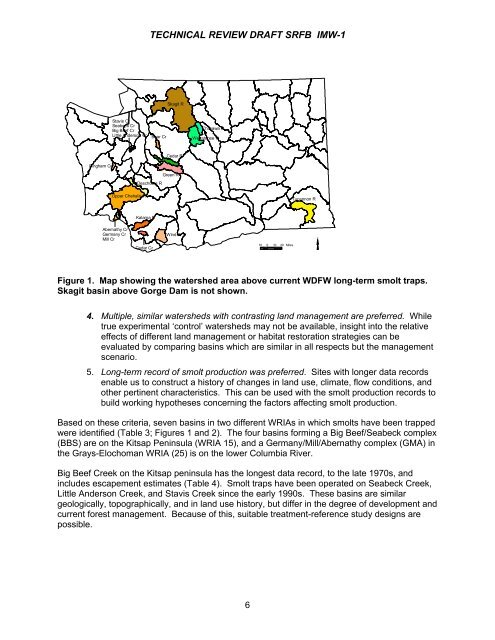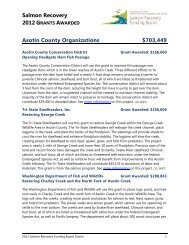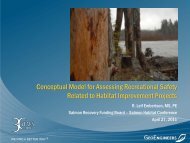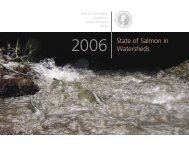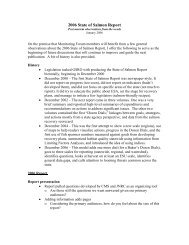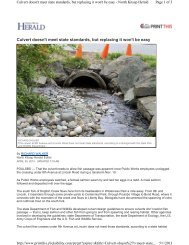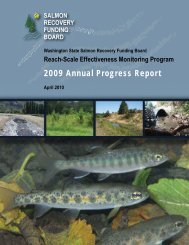Proposal to Establish Intensively Monitored Watersheds for ...
Proposal to Establish Intensively Monitored Watersheds for ...
Proposal to Establish Intensively Monitored Watersheds for ...
- No tags were found...
You also want an ePaper? Increase the reach of your titles
YUMPU automatically turns print PDFs into web optimized ePapers that Google loves.
###TECHNICAL REVIEW DRAFT SRFB IMW-1Skagit RStavis CrSeabeck CrBig Beef CrLittle Anderson CrBear CrChiwawa RWenatchee RCedar RBingham CrGreen RDeschutes RUpper Chehalis RTucannon RKalama RAbernathy CrGermany CrMill CrWind RNCedar Cr10 0 10 20 MilesFigure 1. Map showing the watershed area above current WDFW long-term smolt traps.Skagit basin above Gorge Dam is not shown.4. Multiple, similar watersheds with contrasting land management are preferred. Whiletrue experimental ‘control’ watersheds may not be available, insight in<strong>to</strong> the relativeeffects of different land management or habitat res<strong>to</strong>ration strategies can beevaluated by comparing basins which are similar in all respects but the managementscenario.5. Long-term record of smolt production was preferred. Sites with longer data recordsenable us <strong>to</strong> construct a his<strong>to</strong>ry of changes in land use, climate, flow conditions, andother pertinent characteristics. This can be used with the smolt production records <strong>to</strong>build working hypotheses concerning the fac<strong>to</strong>rs affecting smolt production.Based on these criteria, seven basins in two different WRIAs in which smolts have been trappedwere identified (Table 3; Figures 1 and 2). The four basins <strong>for</strong>ming a Big Beef/Seabeck complex(BBS) are on the Kitsap Peninsula (WRIA 15), and a Germany/Mill/Abernathy complex (GMA) inthe Grays-Elochoman WRIA (25) is on the lower Columbia River.Big Beef Creek on the Kitsap peninsula has the longest data record, <strong>to</strong> the late 1970s, andincludes escapement estimates (Table 4). Smolt traps have been operated on Seabeck Creek,Little Anderson Creek, and Stavis Creek since the early 1990s. These basins are similargeologically, <strong>to</strong>pographically, and in land use his<strong>to</strong>ry, but differ in the degree of development andcurrent <strong>for</strong>est management. Because of this, suitable treatment-reference study designs arepossible.6


